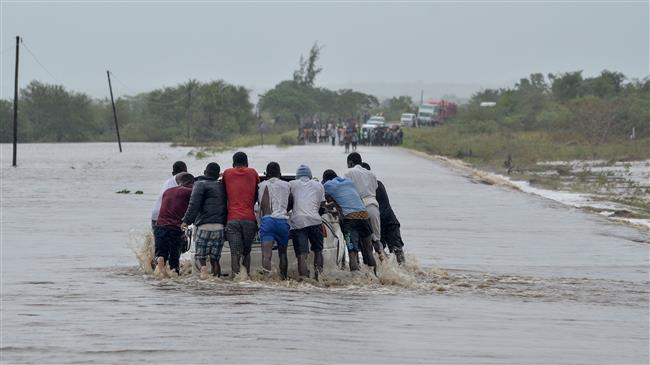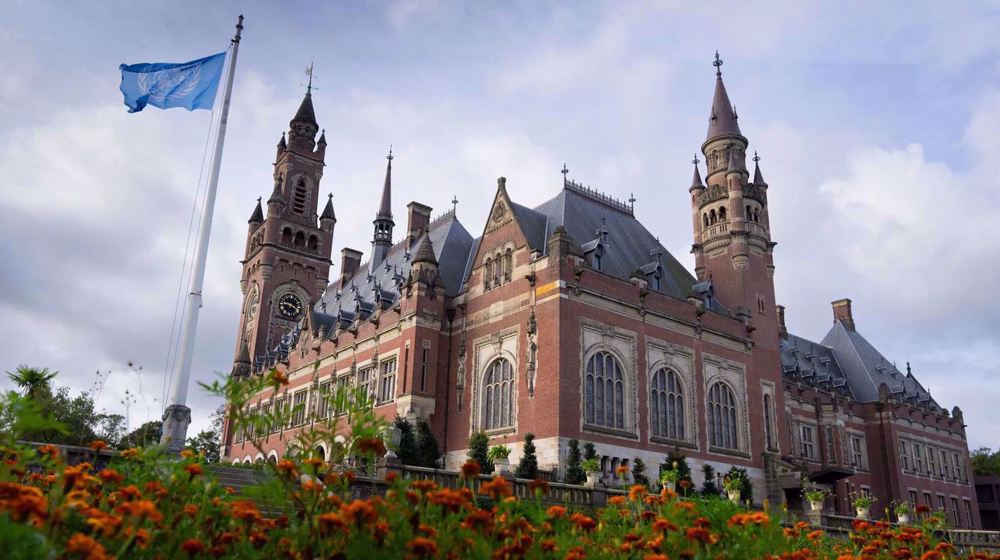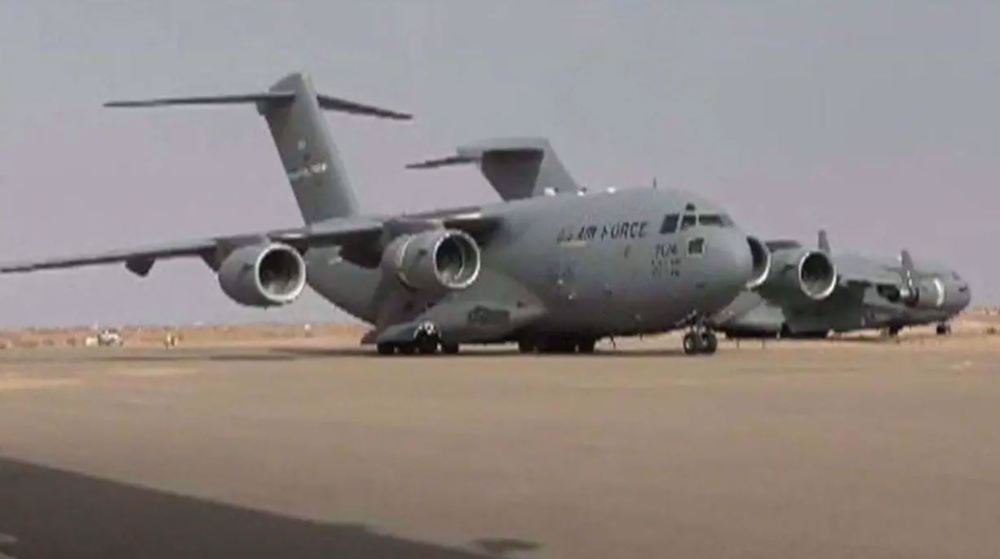38 killed as floods worsen in Mozambique after second cyclone
Heavy rain has battered northern Mozambique as residents and relief workers confronted the widespread devastation wrought by Cyclone Kenneth, the strongest cyclone to ever hit Africa, which killed 38 people and destroyed thousands of homes.
Roads have been washed away, fields submerged and many buildings wrecked by the storm, which came weeks after Cyclone Idai hit the Mozambican city of Beira, 1,000 kilometers (620 miles) to the south.
Cyclone Kenneth made landfall late on Thursday in Cabo Delgado province, packing wind gusts of up to 220 kilometers per hour.
The UN Office for the Coordination of Humanitarian Affairs (OCHA) described it as the strongest cyclone to ever lash the continent, and predicted further heavy rain over the coming days.
"Cyclone Kenneth made landfall at the end of the rainy season, when river levels were already high, increasing the risk of river flooding," the UN agency said in its latest update.
"Humanitarian needs in Mozambique have sky-rocketed, and the humanitarian response will need to rapidly scale-up."
According to figures provided by the Mozambique authorities to NGOs, around 200,000 people in Pemba city, the capital of Cabo Delgado, are in danger.
According to a preliminary toll from the National Institute of Disaster Management (INGC), 38 people have died, 39 have been injured, more than 23,000 people are without shelter and nearly 35,000 homes have been either partly or completely destroyed.
'We don't know what we'll do'
"The water came inside the house and all the way to the backyard," said Sumala Cabila, 23, standing in his family home in Pemba's working-class Piquite suburb which flooded on Sunday morning.
As rain poured down and roads in the district became unpassable except for 4-wheel-drive vehicles, Cabila's sister struggled to look after her one-month-old child.
"If it continues to rain, we don't know what we'll do," he said as water streamed of his slanted roof.

In Pemba, a tourist destination, staff mopped up pools of water at a hotel and cleared tree branches out of the lobby fountain, while laborers struggled to clear out the city's drainage system blocked by flood debris.
"(We) planned to mobilize as much aid as possible to Ibo and also from there to Quissanga via Roa," said UN OCHA official Saviano Abreu, naming two areas outside Pemba worst hit by storm damage and flooding.
"It was the priority for government and humanitarian organizations, as these two areas are in urgent need.
"We managed to send one flight with World Food Programme (WFP) supplies of rice and biscuits, and some non-food items.
But unfortunately the weather conditions are changing too fast and threatening the operation. It's raining again and the second flight couldn't go."
To the north of Pemba, the town of Macomia was also badly hit, with homes and businesses destroyed, roofs torn off, trees and electric pylons uprooted.
"We have grave fears for the thousands of families currently taking shelter under the wreckage of their homes. They urgently need food, water and shelter to survive the coming days," said Nicholas Finney, head of Save the Children's response team in Mozambique.
The northern region hit by Cyclone Kenneth is more sparsely populated than Beira, which was hit by Cyclone Idai in mid-March.
But the area has also been hard hit by deadly raids by a militant group over the past 18 months that the army has been unable to control.
Before smashing into Mozambique, Kenneth passed by the Comoros islands.
(Source: AFP)
VIDEO | Press TV's news headlines
VIDEO | US-Israeli genocide: Will Gazans see ceasefire deal achieved?
VIDEO | Grief strikes Parachinar: 44 lives lost in terror attack
VIDEO | Yemen’s armed forces target Israeli airbase amid nationwide pro-Palestinian rallies
Putin vows more test of new hypersonic missile
VIDEO | Jordanians continue rallies to denounce Israeli genocide in Gaza, Lebanon
6 Israeli soldiers commit suicide: Reports
Diplomat discourages recourse to pressure, intimidation, confrontation against Iran















 This makes it easy to access the Press TV website
This makes it easy to access the Press TV website